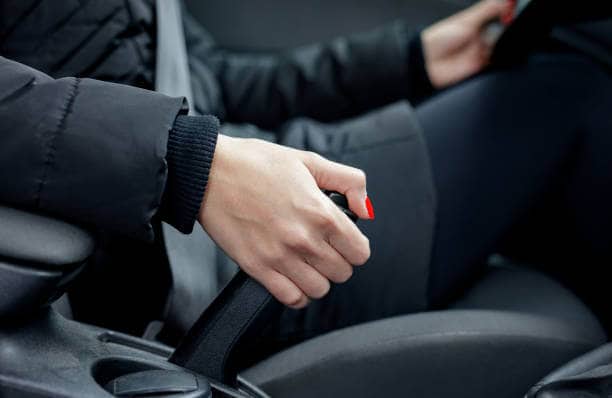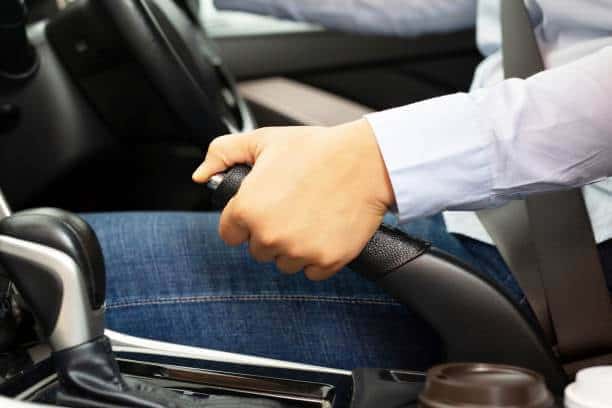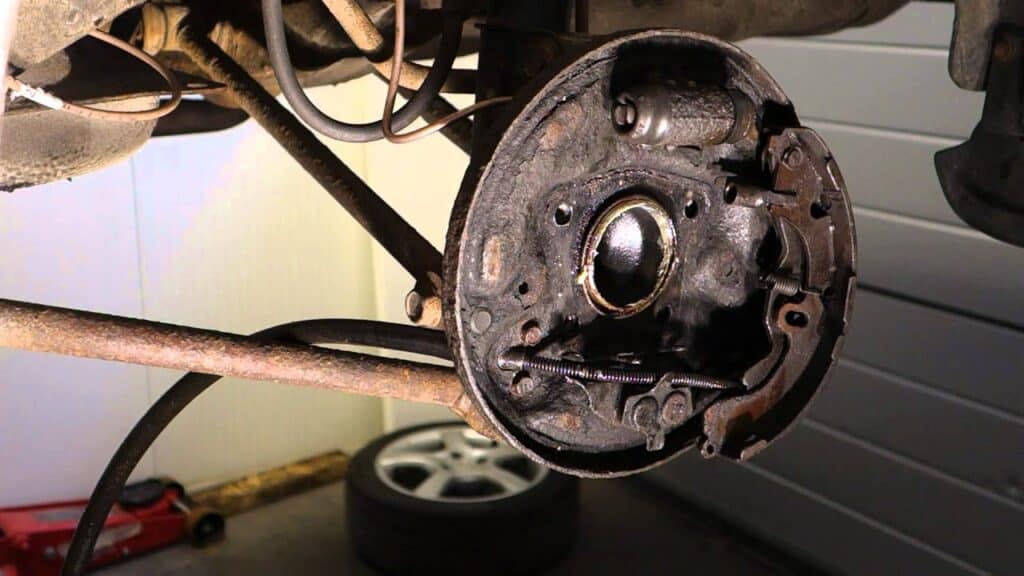The hand brake is the brake that works by using the hand. Handbrakes are used to gently slow down your car while moving until it comes to a stop. It operates by pulling the handbrake lever position next to the driver’s seat, which is the gearstick. Modern vehicles have automatic or electric handbrakes and they are involved by placing the car into P for “Park” position.
It is designed to keep the car in position once the footbrake fails to function. Furthermore, it prevents the car from moving forward when parked. It is almost similar to the parking brake. You must understand how the handbrake works and how it can be fixed in case of any damages.
A handbrake uses the rear disc pads through a handbrake cable. The cable must be handled gently, especially when pulling, to avoid damages or tear the rear brakes.
How the handbrake functions?

First, engage the pulling method to fasten your two rear wheels. The car will then slow down and finally stop. If your car is an advanced one with an electronic handbrake, activate the pulling mechanism attached to the wheels, and the wheels will be locked therefore stopping the car. A handbrake is used in unavoidable and emerging circumstances.
For instance, after an emergency stop. You will need to use the handbrake pedal to make an emergency stop. After your car has stopped, use the handbrake to make the car neutral preventing your car from suddenly moving forward after it has stopped.
Secondly, a handbrake will be required when you have reached a turning point. If you are making a turn on the path that slopes towards a rough place, drive slowly while using the clutch control and apply the handbrake after each point to prevent the car from rolling.
Moreover, a handbrake is also used when parking your car to prevent the car from moving forward, making your car more secure. Finally, it can be used when driving through a steep road, for example, a hill.
How many clicks does the handbrake use?

The handbrake uses 3 to 9 clicks when pulling it for functioning, that is, after stopping, parking, or acting as an emergency brake.
How to release car handbrake in case of any problems

Step 1: Turn on the car and leave the engine to warm
Start the car and leave it running to heat the car handbrake and other car components.
Step 2: Attempt to dismantle the handbrakes
Try to dismantle the hand brakes slowly and gently, breaking up any dirt that has already accumulated. Removing gently prevents your handbrake cable from stretching and damaging.
Step 3: Separate the handbrake parts that you removed, then check the parts
The handbrake is joined to a tire shown in the manufacturer’s manual. Try cleaning all dirt that has accumulated at the handbrake system. Attempt again, moving the handbrake cable in every direction to get rid of all dirt.
Step 4: Return all the removed parts
After cleaning thoroughly and removing all dirt, reinstall all the parts you removed appropriately to their correct location.
Step 6: Test the handbrake
Try the hand brake to see if it works. If it fails to function, repeat the processes above and try again. However, if the failure persists, check the handbrake cable for any damages and finally contact a licensed mechanic.
How to replace a handbrake cable

Step 1: Lift the car using a car jack
Firstly, you will be required to slowly jack your car at the rear to reach the rear wheels.
Step 2: Take off the rear wheel after unscrewing the wheel nuts
Using a screwdriver, unscrew the rear wheel slowly. Remove the rear wheel nuts from the rear wheel. After removing the wheel nuts, remove the rear wheel gently.
Step 3: Remove the drum covers
After removing the rear wheel, loosen the brake drum by using the appropriate tool and carefully not to damage it. Further, remove the drum cover from the nuts holding the wheel.
Step 4: Untighten the springs inside the brake drum
Take a pair of clippers and gently loosen the springs located inside the brake drum, holding the drum shoe in position by twisting in different directions while pulling the spring.
Step 5: remove the spring
Remove the brake shoe by removing the spring completely. Further, remove the brake shoe which holds the handbrake cable.
Step 6: Separate the handbrake cable from the brake shoe
Take a pair of clippers, press the end of the car brake shoe, and then tow to release the handbrake cable. Remove the old cable from the plate.
Step 7: Cut handbrake cable ties
Cut the cable ties and then release the old cable.
Step 8: Connect the new cable to the plate
Place the new cable downwards to the brake drum and connect it gently. Use new cable ties to hold the new cable in position and place it slowly until it grips on the teeth fitting on the blacking plate.
Step 9: Return the brake shoe to its appropriate location
Place the brake shoe slowly into the drum and place back the spring. Press it hard until it clicks in place.
Step 10: Place back the rear wheel in position
Screw the rear wheel tightly using screwdriver and wheel nuts.
Step 11: Test the handbrake if it is working correctly
If the handbrake still fails after testing, try to redo the processes above. Finally, visit a licensed manufacturer.
You might be interested to read also our another article of: How Often Should You Check Your Brake Fluid?
Conclusion
Like other brakes, such as parking brakes, drum brakes, and hand brakes are essential for emergency brakes. Further, handbrakes work almost similar to the parking brakes but both are different. However, the handbrake needs careful handling to avoid damaging the handbrake parts.
Use this article to fix your damaged handbrake cables or replace it. It is annoying when the handbrake fails to function appropriately or fails to work totally, and that is why the article should guide you on how to handle the handbrakes. This article shows how to handle the handbrakes and it is easy to understand by both the experts and the non-experts.
